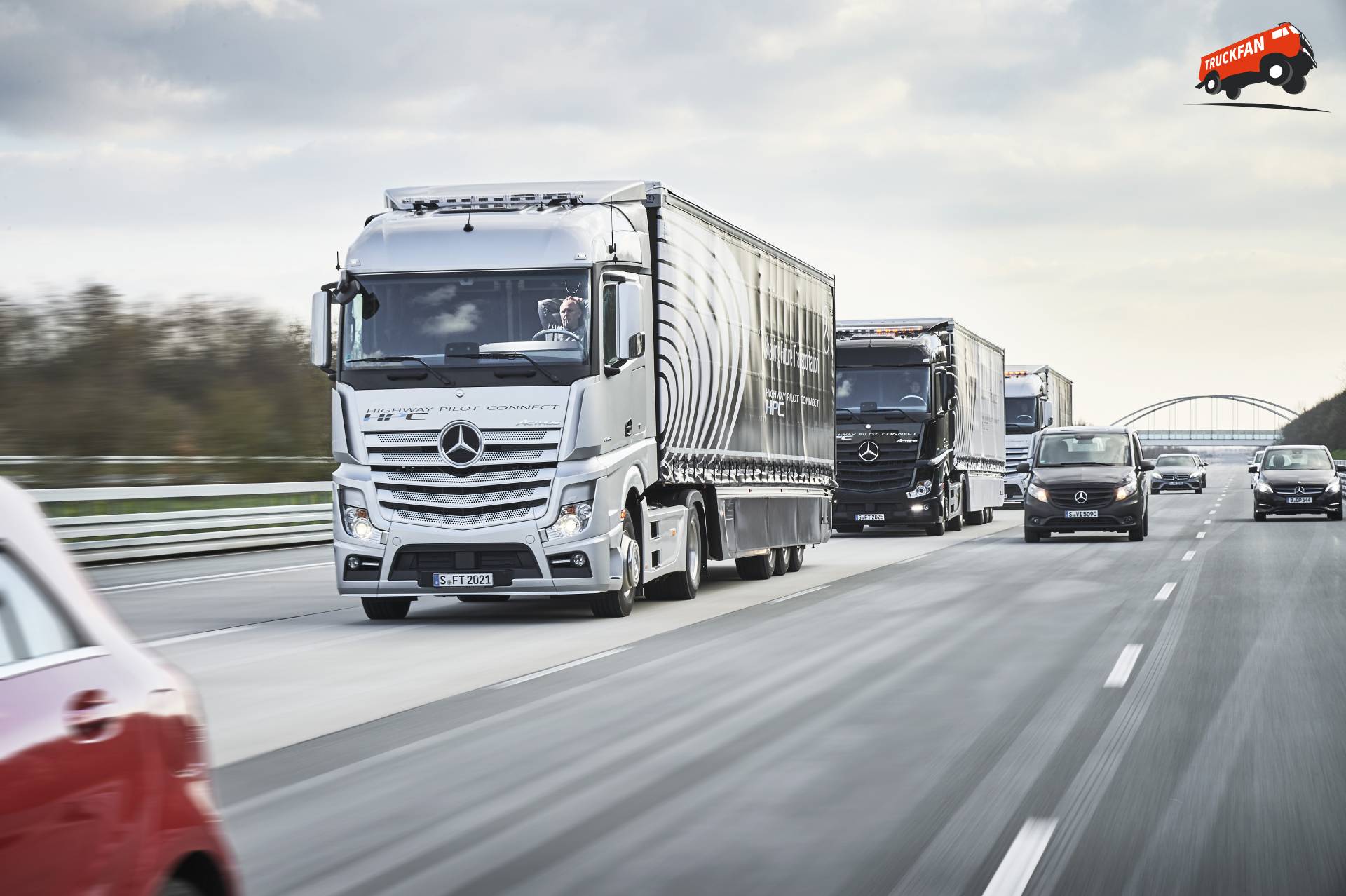Today, three connected and autonomous Mercedes-Benz Actros trucks start a cross-border convoy drive from Stuttgart to Rotterdam. Daimler Trucks, the worldwide leading truck manufacture, actively supports the initiative European Truck Platooning Challenge 2016 initiated by the Netherlands government as part of its EU-Council Presidency. Dr. Wolfgang Bernhard, responsible for Daimler Trucks & Daimler Buses in Daimler’s Board of Management, personally bade farewell to the drivers at their departure from the Mercedes-Benz museum for their two-day trip.
Daimler Trucks is the only manufacturer of autonomous trucks with official road approval worldwide and participates jointly with five other European commercial vehicle manufacturers in the rally. The scheduled arrival at the port of Rotterdam is on April 6th, 2016. The tour of the three Mercedes-Benz trucks leads from Stuttgart over Heilbronn (A81) on the highways A61 and A67 across the federal states Baden-Württemberg, Rheineland-Palatinate and North Rhine-Westphalia towards Venlo for passing the border to the Netherlands. By the European Truck Platooning Challenge the European commercial vehicles manufacturer jointly address with the Netherlands government the potential chance of truck platooning and the necessity of a harmonized, transborder regulation with the aim to facilitate efficient road transport throughout the EU.

Harmonized, cross border regulation is the essential prerequisite for the efficient road transport in the future
“With our autonomous and connected trucks, we are pleased to participate in the European Truck Platooning Challenge initiated by the Netherlands. I wish our drivers to have a good and successful trip on their way to Rotterdam. We consider platooning as meaningful part of the integrated approach in which all stakeholders in road transport contribute to reduce fuel consumption and CO2”, said Dr. Wolfgang Bernhard, on the occasion of the departure of the three trucks in Stuttgart.
“Driving in a convoy is one of numerous examples to raise the performance of goods transport extensively with connected trucks. Today already 365 000 commercial vehicles of Daimler are connected. We are consequently pushing this development”, Bernhard continued.
The worldwide transport of goods is a prerequisite for economic growth. Transporting more goods in the future requires innovative solutions like truck platooning. Daimler’s smart trucks have the potential to substantially make the transport of goods more efficient, more sustainable and safer in the coming years. The key to this is the connection of the truck with other vehicles and further logistics participants. Just about two weeks after the world premiere of its Highway Pilot Connect system on the highway A52 near Düsseldorf Daimler Trucks again demonstrates its leadership in technology on the field of connected vehicles with the participation in the European Truck Platooning Challenge 2016.
Autonomous Truck Platooning lowers fuel consumption and CO2
Highway Pilot Connect is an advancement of Highway Pilot, the worldwide only system for automated driving of heavy trucks. This time Daimler Trucks demonstrates the advantages of electronic vehicle-to-vehicle (V2V) networking cross border on the way to Rotterdam: The technology allows electronic docking by vehicles on motorways and long-distance highways, also known as platooning. Connected vehicles in a platoon require a distance of only15 instead of 50 metres between them. This considerably smaller distance produces a significant reduction in aerodynamic drag – comparable to slipstream riding in cycling competitions. In this way a platoon of three trucks can achieve a fuel saving of up to ten percent, reducing CO2 emissions in the same measure.
In parallel with this, platooning allows much more efficient use of the road space: thanks to the shorter distance between vehicles, a platoon of three linked trucks has a length of only 80 metres. In contrast to this, three trucks which are not electronically docked require a total of 150 metres of road space. At the same time platooning makes road traffic much safer: while a human behind the wheel has a reaction time of 1.4 seconds, Highway Pilot Connect transmits braking signals to the vehicles behind in less than 0.1 seconds. This considerably reduced reaction time can make a major contribution towards reducing rear-end collisions such as occur e.g. when encountering traffic jams on motorways. Besides all technologic possibilities of the connected vehicle the driver always bears responsibility for the control of all assistance systems.
As an element of the so-called integrated approach, connected driving in the form of a truck-platoon can enable all stakeholders in road transport to jointly contribute to the European Union’s goal of saving CO2 (30 percent until 2030 compared to 2005): Commercial vehicle manufacturers, body builders, the tire industry, the logistics enterprises and finally the political stakeholders. The overall objective of the integrated approach is to optimize the holistic system of road transport.

No Responses